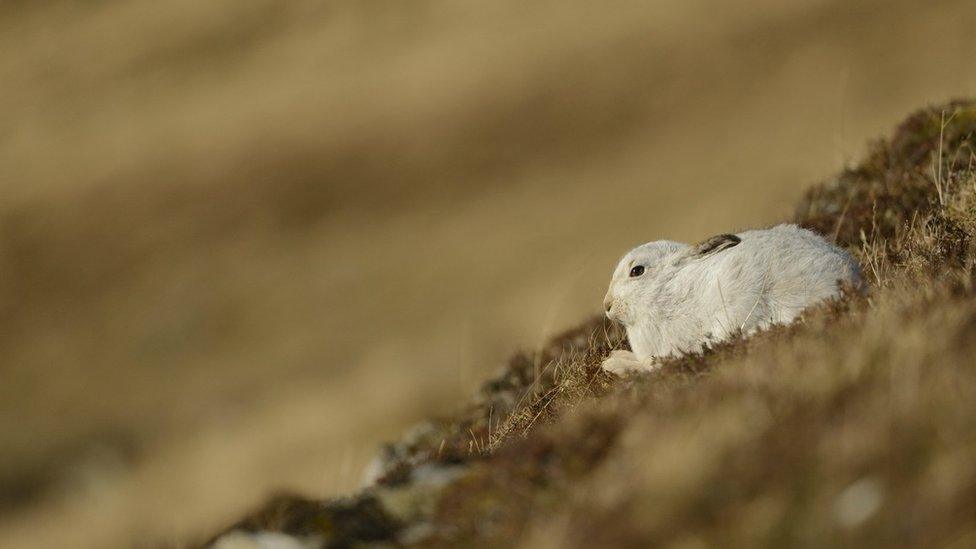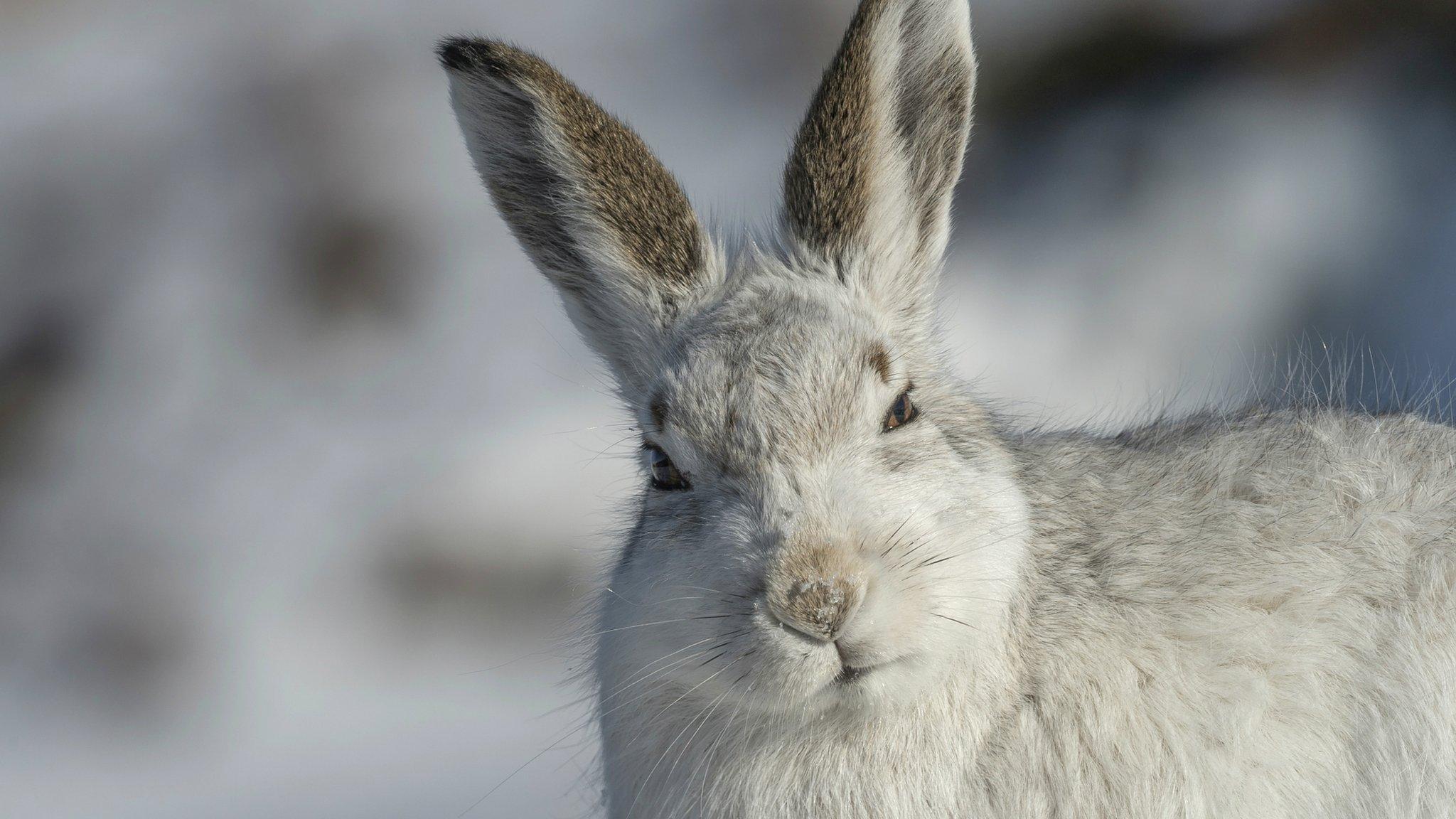Mountain hare facing 'local extinction' despite promises
- Published
- comments

Mountain hares are facing declining numbers on some Scottish grouse moors
Mountain hare populations in some upland areas face "local extinction" despite promises to protect their numbers, conservationists have warned.
Grouse shooting estates have previously promised "voluntary restraint" to keep hare populations healthy in areas such as the Cairngorms.
But a coalition of environmental and outdoor organisations said there was evidence that culls were causing harm.
It is calling for a ban on culling until proper safeguards are in place.
Conservationists claim mountain hares are routinely culled on a large scale across many grouse moors in Scotland.
They claim that in some areas it has been shown that the culls are leading to severe population declines and potentially even local extinctions.
'Serious concerns'
Duncan Orr-Ewing from RSPB Scotland, said ministers had a duty to maintain mountain hare populations in a state of good health.
He said: "The Scottish government needs to do more to safeguard these iconic species of our upland areas.
"In 2014 we had serious concerns that the notion of voluntary restraint would be ignored by many in the grouse shooting industry and, with the evidence of culls continuing on many moors over the last three years, it seems that these fears have been well founded.

Moorland groups say there is no evidence that culls are to blame for the decline
"The start of the mountain hare season has already begun meaning hare populations will continue to be put at risk by unregulated culls that we believe, are resulting in localised disappearance of hare populations."
He added: "We still do not know what impact these large scale culls are having on mountain hares' wider conservation status and this could mean that the Scottish government may be in breach of its legally binding international obligations for this species."
'Beyond recovery'
Susan Davies, director of conservation at the Scottish Wildlife Trust, said: "We believe that grouse moor managers have a responsibility for this important native species.
"Lethal control should be halted until there is both accurate information on the number of hares culled, and the true effect of these culls on the health of the hare population is known."
Alison Johnstone MSP said: "The unnecessary and unregulated culling of mountain hares on intensive grouse moors across Scotland is damaging populations of this species beyond recovery.
"I have previously asked the cabinet secretary to ban these culls, at the very least in our national parks and I support the call from these 10 organisations for the government to do more to safeguard populations of mountain hares and implement a moratorium on culls until work can be carried work to assure those concerned that any necessary mountain hare management can be sustainable."
The coalition includes: RSPB Scotland, Scottish Wildlife Trust, Scottish Raptor Study Group, Badenoch and Strathspey Conservation Group, Cairngorms Campaign, National Trust for Scotland, Royal Zoological Society of Scotland, Mammal Society, John Muir Trust and Mountaineering Scotland.
Government action
The Scottish government said it was opposed to large scale culling but recognised that sometimes mountain hare numbers did need to be controlled, for instance, to protect newly-planted trees.
A spokesperson said: "Scottish Natural Heritage is examining the available evidence. If this points to continuing high levels of culling of hares that could cause significant population declines, locally or nationally, the Scottish government will consider bringing forward further measures to protect them.
"We are also establishing an independent group to examine how we can ensure grouse moor management practices are sustainable and compliant with the law.
"We would expect mountain hare management to be part of the group's work."
The Scottish Gamekeepers Association (SGA) said there was no evidence the decline in hare numbers was confined to shooting estates.
A spokesman said: "When the new guidance on best methodologies to count mountain hares is published, the SGA will be asking Scottish government to ensure hares are counted on all holdings, including nature reserves and re-wilding areas not just grouse moors, so the public can finally get a transparent picture of where hares are declining and why.
"Voluntary restraint is being exercised on grouse moors. Where hares are over-running, populations are being controlled to prevent disease and habitat damage.
"Where their numbers are lower, there is less or no need for management. It is the same with deer. In our view, that is what voluntary restraint is."
Tim Baynes, director of the Scottish Moorland Group, said: "There is no evidence provided by the 10 organisations to substantiate claims that periodic culls are endangering mountain hare populations.
"In 2014, we issued a joint statement with SNH which acknowledged the need for occasional culls but recognised the requirement to do so responsibly. Culls range from 14% to 5% of hare populations in years when culls are carried out, which is sustainable."